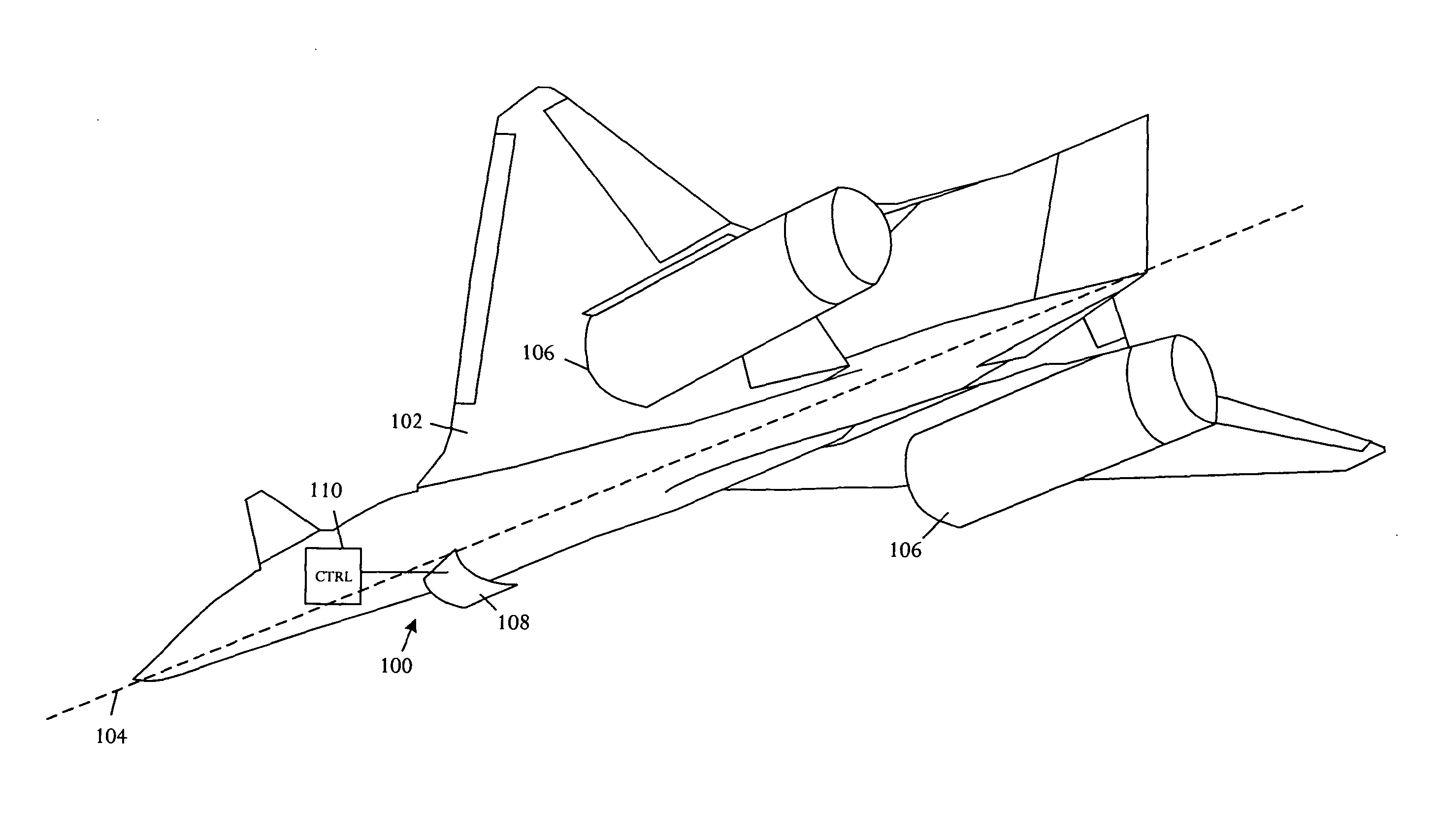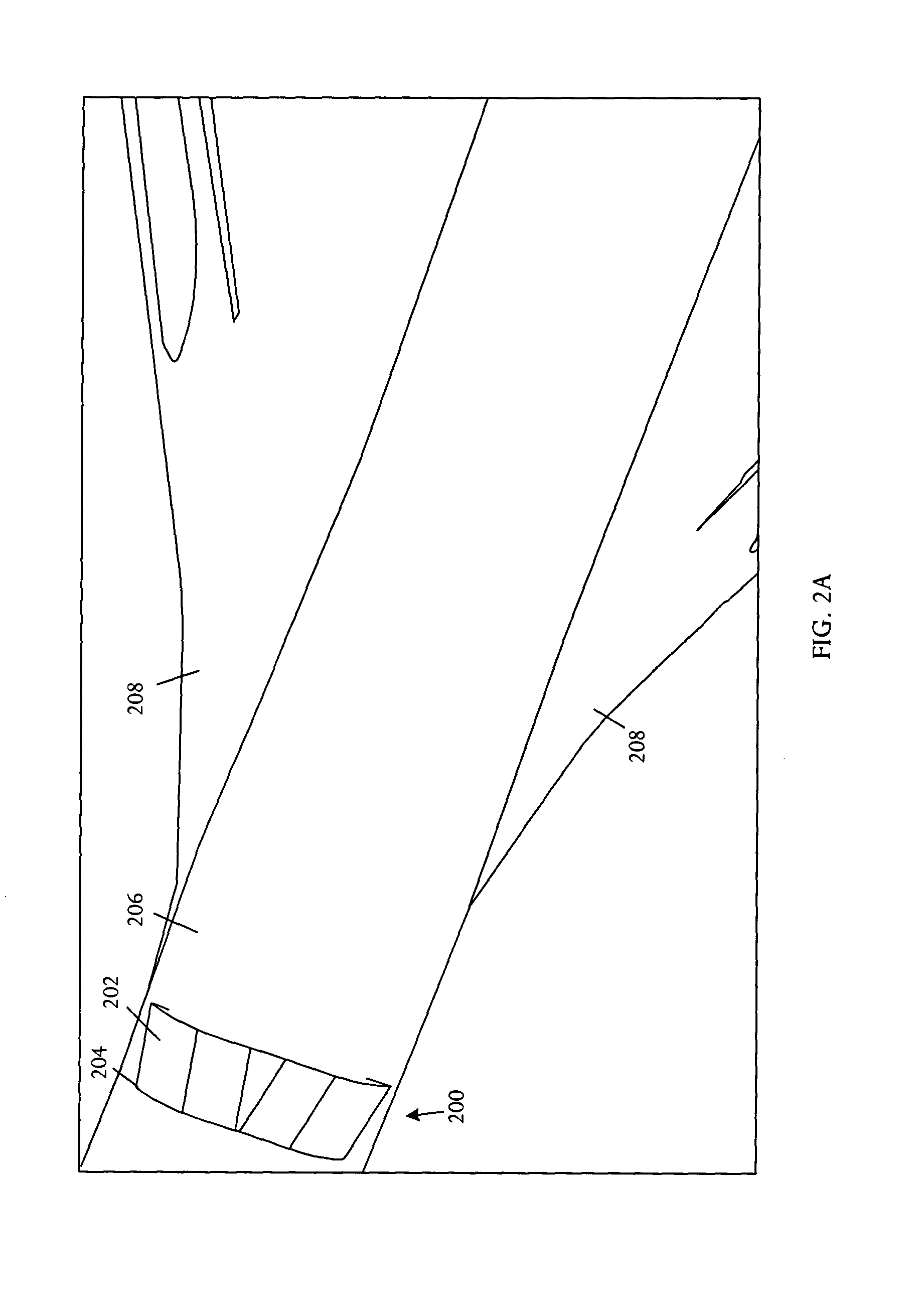Aircraft thickness/camber control device for low sonic boom
a technology of camber control and aircraft, which is applied in the direction of power amplification, canard-type aircraft, transportation and packaging, etc., can solve the problems of sonic boom creating a major practical risk of commercial supersonic aviation, difficult to fly around the plane, and difficulty in achieving the effect of reducing the risk of sonic boom
- Summary
- Abstract
- Description
- Claims
- Application Information
AI Technical Summary
Benefits of technology
Problems solved by technology
Method used
Image
Examples
Embodiment Construction
[0022] Referring to FIG. 1, a schematic pictorial and block diagram illustrates an example of an aircraft thickness / camber control device 100 extending along a longitudinal axis 104 forward and aft and that has a concentrated source of compression 106 for example that results from inlet shock or spillage. The thickness / camber control device 100 comprises a structural member 108 that mounts on the bottom of the outer mold line at a position forward of the concentrated source of compression 106 and a control element 110. The control element 110 is connected to the structural member 108 and controls the structural member 108 to adjust thickness / camber of the airfoil 102 and generates expansions that cancel the far-field effect created by the concentrated source of compression 106.
[0023] Typically, the largest concentrated source of compression 106 in an aircraft is a nacelle. An airfoil is generally designed for most aerodynamically-efficient performance at a particular Mach number or...
PUM
 Login to View More
Login to View More Abstract
Description
Claims
Application Information
 Login to View More
Login to View More - R&D
- Intellectual Property
- Life Sciences
- Materials
- Tech Scout
- Unparalleled Data Quality
- Higher Quality Content
- 60% Fewer Hallucinations
Browse by: Latest US Patents, China's latest patents, Technical Efficacy Thesaurus, Application Domain, Technology Topic, Popular Technical Reports.
© 2025 PatSnap. All rights reserved.Legal|Privacy policy|Modern Slavery Act Transparency Statement|Sitemap|About US| Contact US: help@patsnap.com



